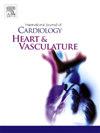Evaluation of the ABC pathway in patients with atrial fibrillation: A machine learning cluster analysis
IF 2.5
Q2 CARDIAC & CARDIOVASCULAR SYSTEMS
引用次数: 0
Abstract
Background
Atrial fibrillation Better Care (ABC) pathway is recommended by guidelines on atrial fibrillation (AF) and exerts a protective role against adverse outcomes of AF patients. But the possible differences in its effectiveness across the diverse range of patients in China have not been systematically evaluated. We aim to comprehensively evaluate multiple clinical characteristics of patients, and probe clusters of ABC criteria efficacy in patients with AF.
Methods
We used data from an observational cohort that included 2,016 patients with AF. We utilized 45 baseline variables for cluster analysis. We evaluated the management patterns and adverse outcomes of identified phenotypes. We assessed the effectiveness of adherence to the ABC criteria at reducing adverse outcomes of phenotypes.
Results
Cluster analysis identified AF patients into three distinct groups. The clusters include Cluster 1: old patients with the highest prevalence rates of atherosclerotic and/or other comorbidities (n = 964), Cluster 2: valve-comorbidities AF in young females (n = 407), and Cluster 3: low comorbidity patients with paroxysmal AF (n = 644). The clusters showed significant differences in MACNE, all-cause death, stroke, and cardiovascular death. All clusters showed that full adherence to the ABC pathway was associated with a significant reduction in the risk of MACNE (all P < 0.05). For three clusters, adherence to the different ‘A’/‘B’/‘C’ criterion alone showed differential clinic impact.
Conclusion
Our study suggested specific optimization strategies of risk stratification and integrated management for different groups of AF patients considering multiple clinical, genetic and socioeconomic factors.
求助全文
约1分钟内获得全文
求助全文
来源期刊

IJC Heart and Vasculature
Medicine-Cardiology and Cardiovascular Medicine
CiteScore
4.90
自引率
10.30%
发文量
216
审稿时长
56 days
期刊介绍:
IJC Heart & Vasculature is an online-only, open-access journal dedicated to publishing original articles and reviews (also Editorials and Letters to the Editor) which report on structural and functional cardiovascular pathology, with an emphasis on imaging and disease pathophysiology. Articles must be authentic, educational, clinically relevant, and original in their content and scientific approach. IJC Heart & Vasculature requires the highest standards of scientific integrity in order to promote reliable, reproducible and verifiable research findings. All authors are advised to consult the Principles of Ethical Publishing in the International Journal of Cardiology before submitting a manuscript. Submission of a manuscript to this journal gives the publisher the right to publish that paper if it is accepted. Manuscripts may be edited to improve clarity and expression.
 求助内容:
求助内容: 应助结果提醒方式:
应助结果提醒方式:


